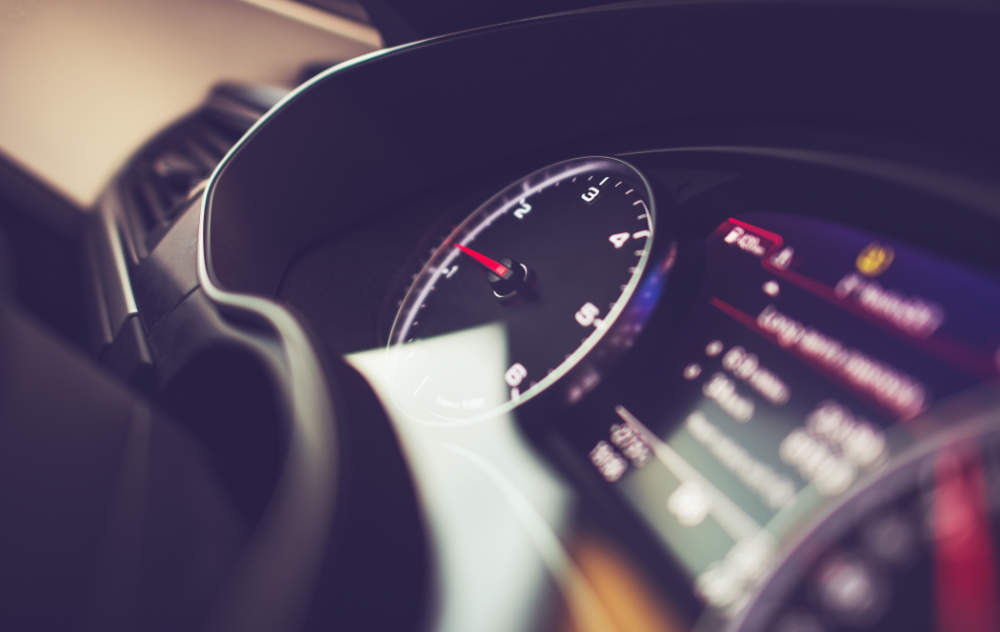Is your engine’s temperature fluctuating constantly? Does it become extremely hot all of a sudden?
If your Jeep Cherokee is showing these symptoms, it’s time to take action.
In this article, you will find what is causing your gauge temperature to rise and how to reduce it. We will also tackle different parts of the car that might affect the temperature as well.
Advertising links are marked with *. We receive a small commission on sales, nothing changes for you.
What is the average temperature for a Grand Cherokee?

The temperature needle in most cars will be at or near the middle. Your car will reach that temperature one or two minutes after starting a cold engine. That is your primary, average temperature.
The ideal engine temperature is between 195 and 220 degrees Fahrenheit. When the needle on the gauge points to the center or near the center, the engine is working normally. Don’t worry if the needle does not fall precisely in the center of the gauge.
If you’re experiencing some of the following signs:
- The hood is scorching. You can expect the hood to produce heat and feel warm to the touch when the engine is operating.
- Light or a temperature gauge
- There is a ticking noise.
- Leaking Coolant on the Ground
- It has a “hot” odor to it.
- Thumping noises.
- Engine power has been reduced.
What causes gauge fluctuations?
For example, the problem could be a fault-sensitive and low-cost thermostat. This happens when the temperature gauge fluctuates from normal to hot.
Below are the top three reasons that cause your gauge temperature to fluctuate.
Radiator Fan
If you locate the reservoir tank, you will see next to it the radiator fan. The main job of the radiator fan is to provide the reservoir tank with air. If your radiator fan is not working as intended, the engine will overheat.
What should you do?
If this happens, there is no way around it. Please take it to the mechanic to check and replace the radiator fan. It would be best if you never drove with a broken radiator fan.
Faulty Radiator
The radiator controls the coolant temperature. When sludge builds up in the radiator, it means the radiator and its fan have failed. It would be best if you replaced it as soon as possible.
If the radiator is not replaced, the color of your coolant will shift from yellow to rusty. That indicates that the engine is no longer cooling efficiently. Aluminum radiators are a better alternative to iron radiators.
The aluminum radiator is corrosion-resistant and long-lasting. It also produces a lot of heat. Aluminum radiators provide more heat. More than any other material actually. That is because of its efficient thermal qualities.
A malfunctioning radiator cap is a common cause of high temperatures when your car is idling. If the cap is not sealed correctly then you will get air inside the radiator. Thus producing air pockets that will directly affect the heater and radiator.
If the engine is not receiving a consistent measure of temperature, it will overheat.
The signs of the malfunctioning radiator cap:
- Collapsing radiator pipes
- Coolant leakage
- Overflowing coolant reservoir
What should you do?
First Step
Look beneath your vehicle for puddles.
- To find out what hue the puddle is, touch it with your finger and then wipe it on a white sheet of paper.
- It’s most likely a coolant leak if it’s green or orange.
Second Step
Check the coolant reservoir.
- Always check the coolant levels with the vehicle at a consistent temperature.
- When coolant levels drop and puddles form, a coolant leak is almost inevitable.
- If you’re not sure where to look for the coolant reservoir, consult your vehicle’s owner’s handbook.
Third Step
1. Detect a Radiator Problem
- Look for puddles beneath your vehicle
- Make sure not to forget to check the coolant reservoir
- Keep an eye on your temperature gauge for fluctuations.
- Examine your engine compartment visually
2. Drain and flush your radiator
- Allow the engine to cool completely
- Raise the vehicle on its wheels
- Drain the coolant into a container by opening the petcock
- Using a hose, flush the radiator
- Fill the radiator with a mixture of water and coolant
3. Repair a Radiator Leak
- Replace the radiator cap
- Seal the leak with a leak sealer
- Use epoxy to fill any plain cracks
- Replace the radiator with a new one
Stuck-Closed Thermostat
The thermostat regulates its temperature before the coolant returns to cool the engine. Though the thermostat is inexpensive and removable, it can cause problems to your car. The coolant cannot flow to the machine to cool it if it becomes jammed and refuses to open. As a result, the engine begins to overheat.
Most cars have a closed-circuit kind of cooling system. That cooling system has a reservoir tank with a marking to determine the coolant level. To avoid coolant loss, it is critical to track this level on a frequent basis. If you find a minor leak, address it immediately. A low coolant level might cause your car’s temperature to vary.
If your thermostat is partially jammed, your car’s temperature will drop while driving. This is because coolant is constantly released into the engine. That causes the temperature to fall rather than rise.
When a thermostat is working correctly, it only permits warm or cool coolant to enter the engine. Even if a jammed thermostat is unlikely to cause damage to your vehicle, it can increase fuel consumption. You will save money on gasoline if you fix the thermostat.
What should you do?
Ideally, you should take it to your dealer or mechanic of choice.
Conclusion
Keeping the temperature stable will ensure safe driving conditions for your Jeep Cherokee. The above solutions will cover most temperature gauge issues.
However, if your problem is not fixed, we advise you to visit a mechanic or your car’s dealer.

Luna Meschiari is a full-blooded car nut who is well known to local garages, as each article is meticulously researched and peppered with the latest piece of information. Guess what car she’s driving right now? A RAV4 2021 Hybrid. But her heart also sleeps for pickups like the F-150. Get to know Luna better on the about us page.
Advertising links are marked with *. We receive a small commission on sales, nothing changes for you.
